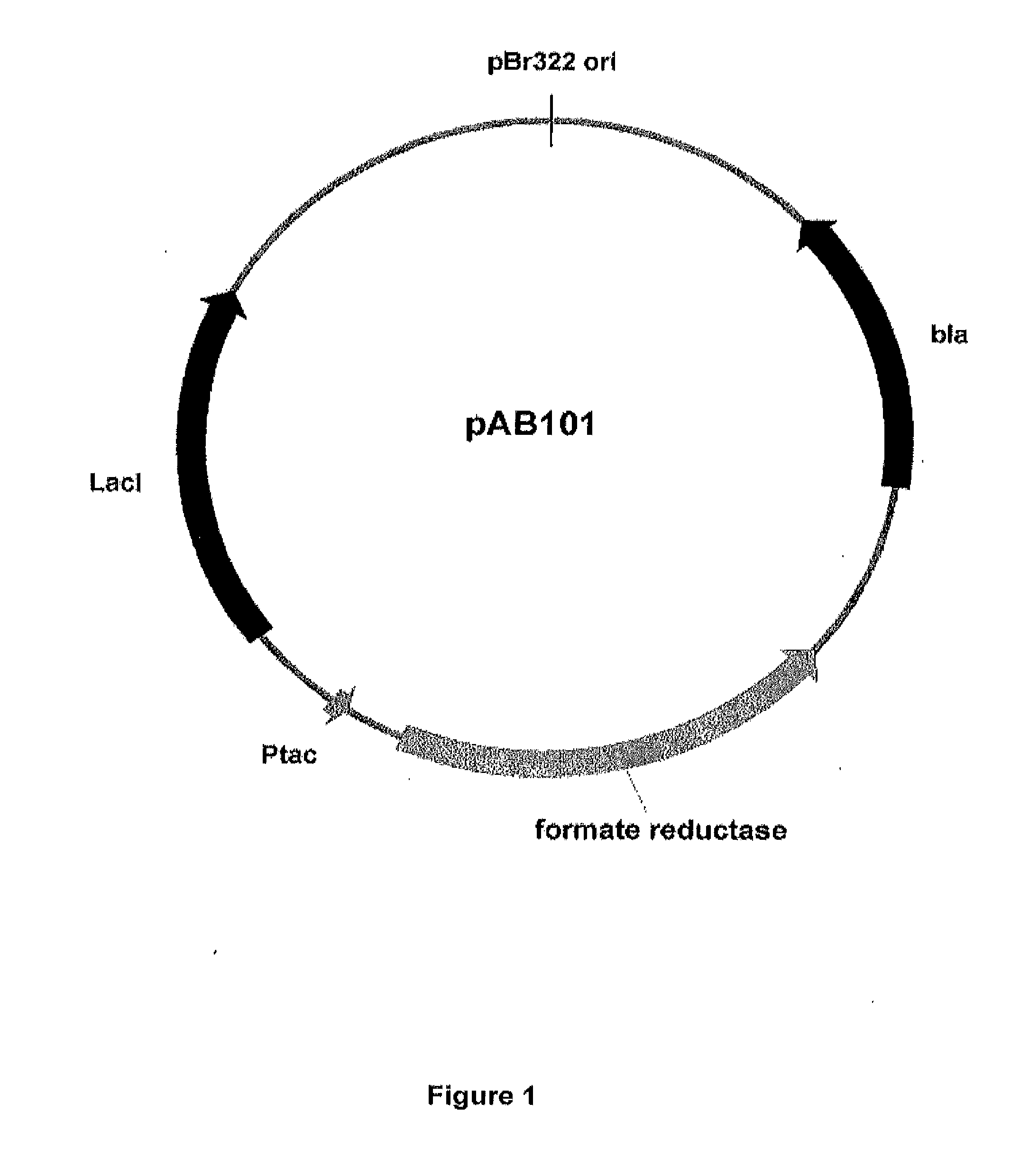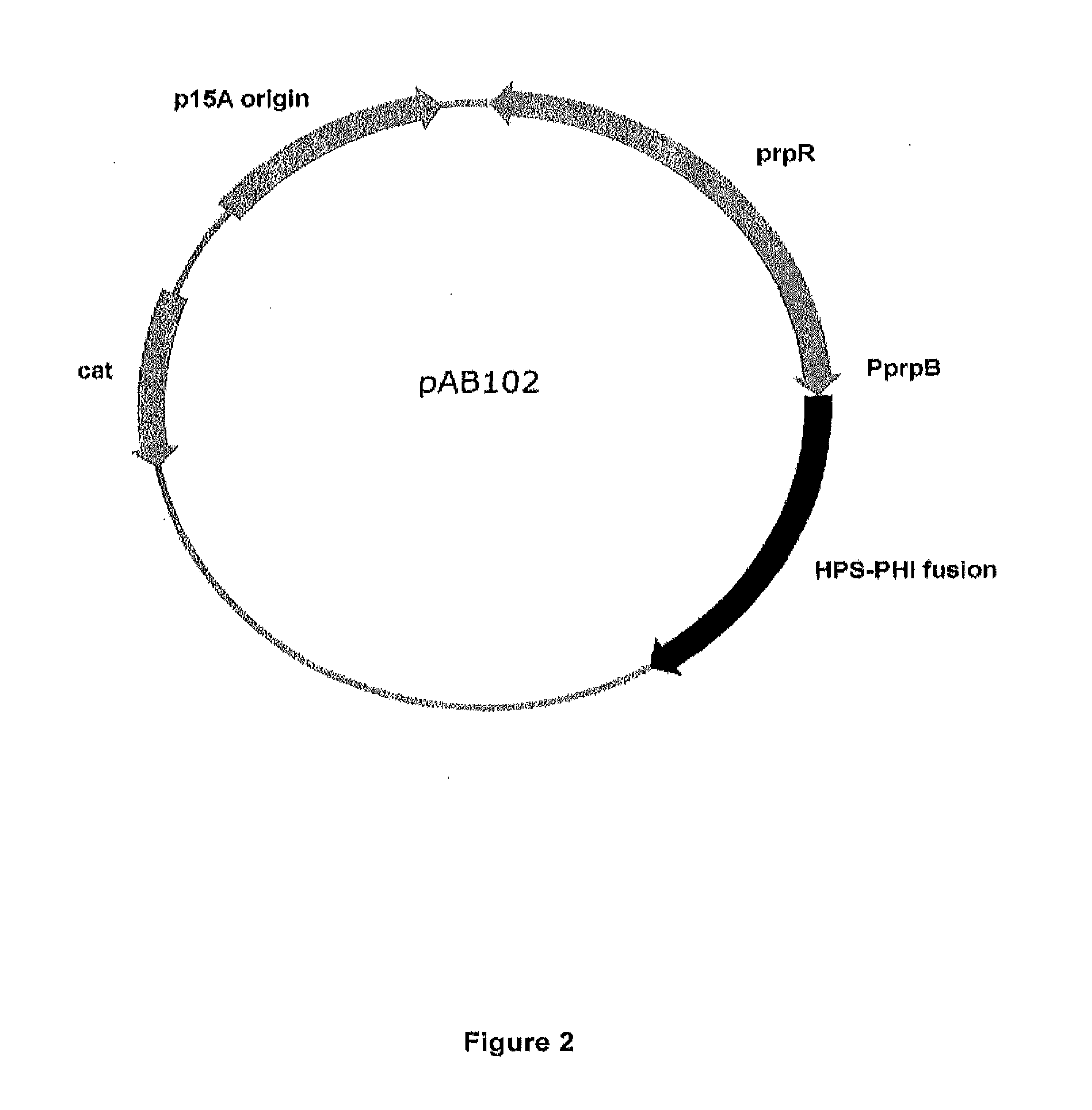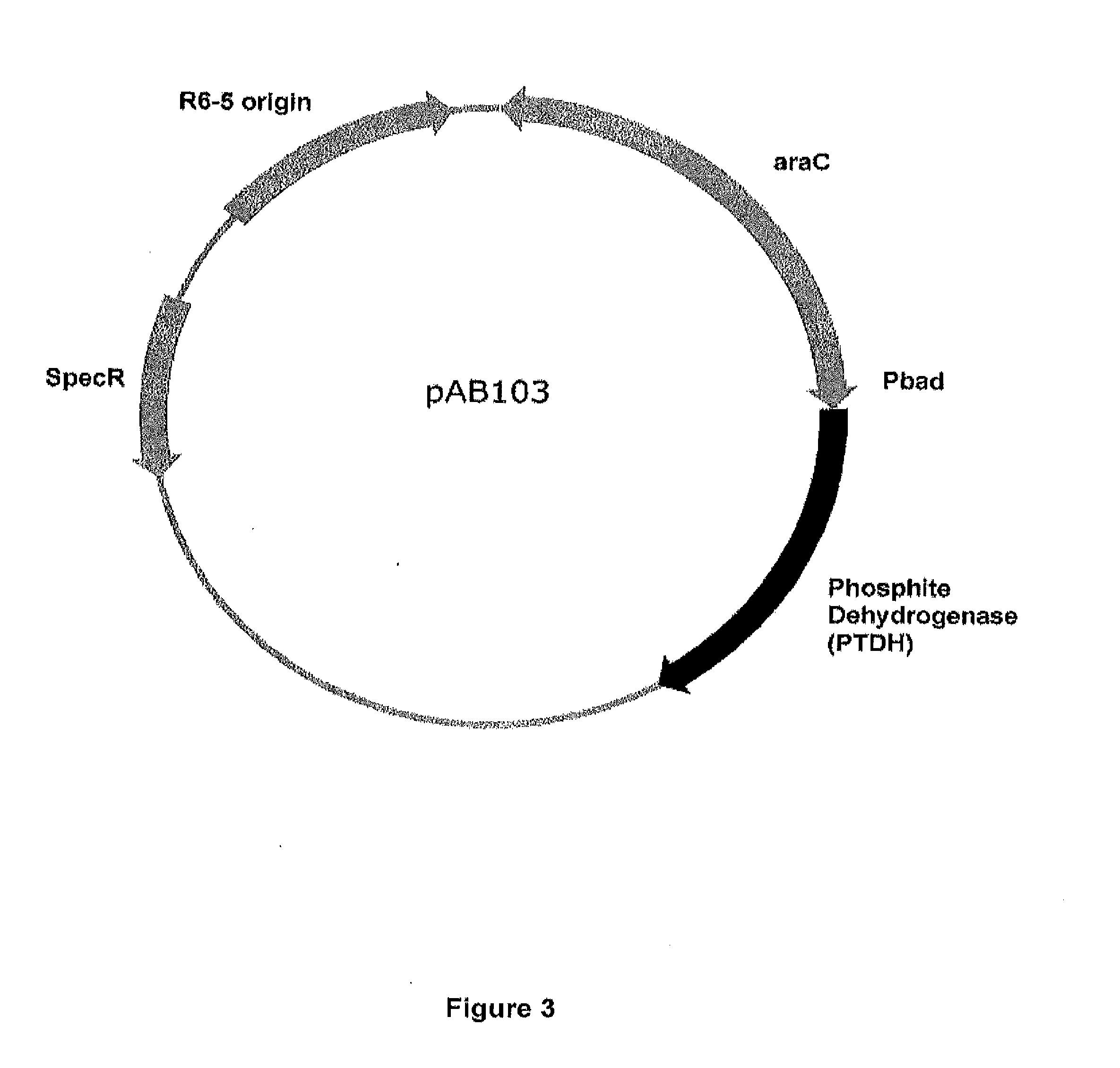Reducing Carbon Dioxide Production and Increasing Ethanol Yield During Microbial Ethanol Fermentation
a technology of microbial ethanol and ethanol, which is applied in the direction of microorganisms, biofuels, biochemical equipment and processes, etc., can solve the problems of reducing affecting the oxidation efficiency and affecting the overall carbohydrate recovery rate, so as to reduce the production of co2 and minimize the need for oxidation of the fermentable portion
- Summary
- Abstract
- Description
- Claims
- Application Information
AI Technical Summary
Benefits of technology
Problems solved by technology
Method used
Image
Examples
experimental examples
[0193]The invention is further described in detail by reference to the following experimental examples. These examples are provided for purposes of illustration only, and are not intended to be limiting unless otherwise specified. Thus, the invention should in no way be construed as being limited to the following examples, but rather, should be construed to encompass any and all variations which become evident as a result of the teaching provided herein.
example 1
Controlled Expression of Formate Reductase in E. coli
[0194]Tani et al (Agric Biol Chem, 1978, 42: 63-68; Agric Biol Chem, 1974, 38: 2057-2058) showed that purified enzymes from Escherichia coli strain B could reduce the sodium salts of different organic acids (e.g. formate, glycolate, acetate, etc.) to their respective aldehydes (e.g. formaldehyde, glycoaldehyde, acetaldehyde, etc.). Of three purified enzymes examined by Tani et al (1978), only the “A” isozyme was shown to reduce formate to formaldehyde. Collectively, this group of enzymes was originally termed glycoaldehyde dehydrogenase; however, their novel reductase activity led the authors to propose the name glycolate reductase as being more appropriate (Morita et al, Agric Biol Chem, 1979, 43: 185-186). Morita et al (Agric Biol Chem, 1979, 43: 185-186) subsequently showed that glycolate reductase activity is relatively widespread among microorganisms, being found for example in: Pseudomonas, Agrobacterium, Escherichia, Flav...
example 2
Expression of the Ribulose Monophosphate Pathway in E. coli
[0201]Collectively, the ribulose monophosphate (RuMP) pathway converts formaldehyde into glyceraldehyde-3-phosphate (G3P) (FIG. 5). In order for this pathway to function in E. coli, two key RuMP pathway enzymes must be cloned and expressed: hexulose phosphate synthase (HPS; reaction 1); and phosphohexulose isomerase (PHI; reaction 2). The remaining reactions are catalyzed by native E. coli enzymes. Ribulose 5-P cofactor is regenerated by multiple sugar-rearrangements catalyzed by pentose phosphate and glycolysis pathway enzymes (reactions 3-5). Dihydroxy-acetone-phosphate is converted into G3P by triosephosphate isomerase (reaction 6). G3P is a glycolysis intermediate that can be converted into pyruvate, and ultimately, ethanol.
[0202]Several studies have shown that RuMP genes can be heterologously expressed in other organisms in order to assimilate C1 carbon or detoxify formaldehyde (Mitsui et al. J Bacteriol, 2000, 182(4)...
PUM
 Login to View More
Login to View More Abstract
Description
Claims
Application Information
 Login to View More
Login to View More - R&D
- Intellectual Property
- Life Sciences
- Materials
- Tech Scout
- Unparalleled Data Quality
- Higher Quality Content
- 60% Fewer Hallucinations
Browse by: Latest US Patents, China's latest patents, Technical Efficacy Thesaurus, Application Domain, Technology Topic, Popular Technical Reports.
© 2025 PatSnap. All rights reserved.Legal|Privacy policy|Modern Slavery Act Transparency Statement|Sitemap|About US| Contact US: help@patsnap.com



